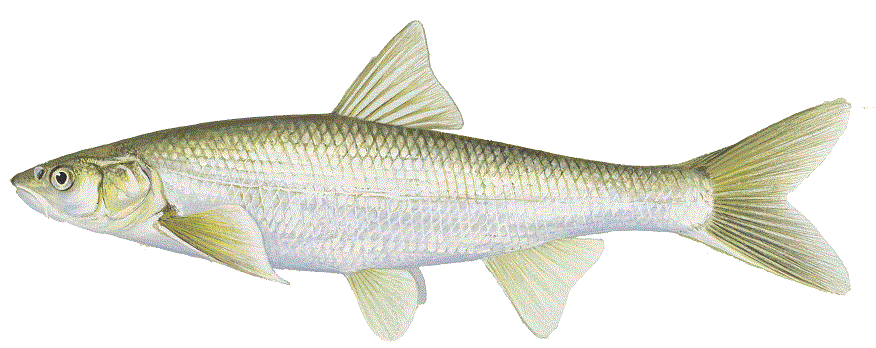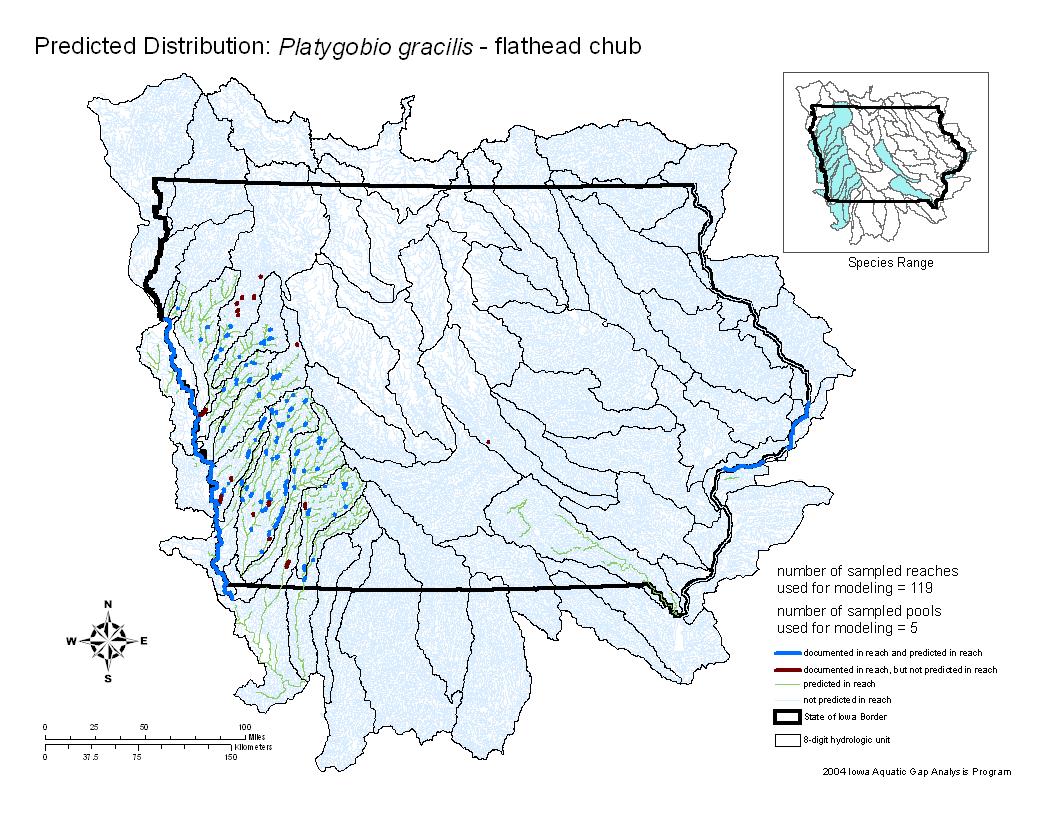Fish Iowa - Fish Species - Flathead Chub

Characteristics
Flathead Chubs have a body adapted for life in strong currents. The most distinctive characters are their strongly depressed head and large sickle-shaped pectoral fins. A large, sub-terminal mouth has a barbel at the corner of the jaw. Pharyngeal teeth are arranged in a pattern of 2, 4-4, 2. The dorsal, anal, and pelvic fins have 8 rays, while the pectoral fins have 16 to 19 rays. The lower lobe of the caudal fin is usually darker than the upper lobe. A complete lateral line has 48 to 57 scales. These chubs are straw to brown-colored on the back, shading to silver on the sides and belly.
Foods
- No results found
Expert Tip
Adults reach 10-inches long after 4 years of life.
Details
The Flathead Chub is usually found in the main channel of turbid, flowing streams and rivers with firm sand or gravel substrates. Researchers usually found the Flathead Chub in shallow pools, but also collected it in strong currents over sand.
This chub species is found in large schools over shallow, sandy bars in the smaller tributary streams. They can survive well in turbid water, which historically characterized the Missouri River. Little is known about their spawning habits, but they are believed to be summer spawners.
Recent stream sampling information is available from Iowa DNR's biological monitoring and assessment program.
Sources:
Harlan, J.R., E.B. Speaker, and J. Mayhew. 1987. Iowa fish and fishing. Iowa Conservation Commission, Des Moines, Iowa. 323pp.
Loan-Wilsey, A. K., C. L. Pierce, K. L. Kane, P. D. Brown and R. L. McNeely. 2005. The Iowa Aquatic Gap Analysis Project Final Report. Iowa Cooperative Fish and Wildlife Research Unit, Iowa State University, Ames
Illustration by Maynard Reece, from Iowa Fish and Fishing
Distribution Map

Restricted to the Missouri River drainage, where it is found in the Nodaway, Nishnabotna, Boyer, Soldier, Little Sioux, and lower reaches of the Big Sioux Rivers. This cyprinid ranges throughout the Missouri River drainage of the Great Plains states and northward into the Yukon Territory.
See our most recent distribution data for this species on the Iowa DNR's Bionet application.
State Record(s)
No state record exists for this species
Submit your potential recordMaster Angler Catches
No Master Angler catches currently exist for this species.
Submit your Master Angler catchFish Surveys
Tip: Click Species Length by Site, then use the dropdown to filter by fish species of interest.Where this Fish Is Found
East Nishnabotna River
Little Sioux River (Correctionville to Missouri R)
West Nishnabotna River